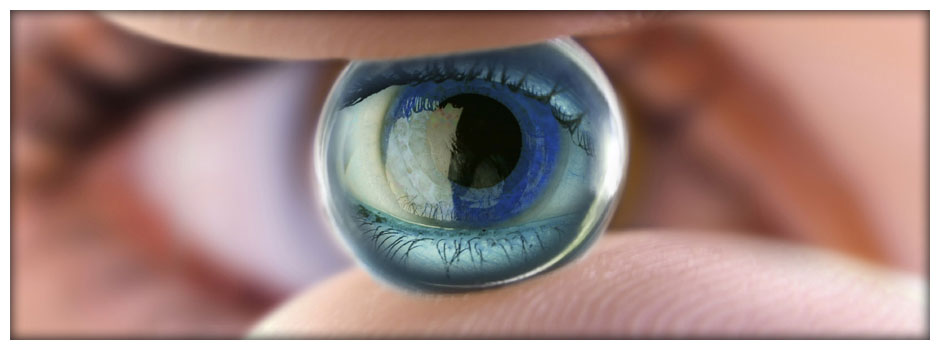
Vision Restored With Custom Contacts
Contact Lens Designs That Fit the Most Demanding Corneas!
 Are you unhappy with the results you achieved with refractive surgery? Are you suffering with blurred vision, double or triple vision, ghosting, starbursts, halos or glare? Do you have distorted vision because of Keratoconus, a corneal transplant or a corneal scar?
Are you unhappy with the results you achieved with refractive surgery? Are you suffering with blurred vision, double or triple vision, ghosting, starbursts, halos or glare? Do you have distorted vision because of Keratoconus, a corneal transplant or a corneal scar?
Z-Wave is a contact lens CAD/CAM (computer aided design, computer aided manufacture) system intended to aid your eye care doctor in addressing the vision problems associated with corneal irregularities.
These irregularities can be from a variety of causes. Among the causes leading to these corneal irregularities are many of the refractive surgery procedures, i.e. RK, LASIK, etc. People who have had a refractive surgery procedure may now be dealing with many different types of visual distortions.
 The symptoms of visual distortions can be blurring, glare, multiple images, poor contrast, halos, star bursts, etc. Another source of these irregularities can be corneal transplants, which will also result in very distorted vision. Trauma or infections can sometimes leave scars in the cornea also causing these irregularities. Certain degenerative conditions such as Keratoconus or Pellucid Marginal Degeneration can cause very poor vision due to the unusual shape that the cornea assumes. All of these types of corneal conditions have traditionally been the most difficult group of conditions to properly restore functional normal vision.
The symptoms of visual distortions can be blurring, glare, multiple images, poor contrast, halos, star bursts, etc. Another source of these irregularities can be corneal transplants, which will also result in very distorted vision. Trauma or infections can sometimes leave scars in the cornea also causing these irregularities. Certain degenerative conditions such as Keratoconus or Pellucid Marginal Degeneration can cause very poor vision due to the unusual shape that the cornea assumes. All of these types of corneal conditions have traditionally been the most difficult group of conditions to properly restore functional normal vision.
Individuals who suffer with any of the aforementioned conditions would find the most benefit in Z-Wave. Wave lenses can fill all types of contact lens needs. Multifocal (sometimes called bifocal) lenses correct for your distance, near (reading) and in-between vision. Single vision lenses are for those who still do not require reading glasses.
 Toric Wave lenses are fit on people who have been diagnosed with Astigmatism. GVSS lenses are specially designed lenses used to temporarily reshape your cornea so that your distance vision remains corrected after the lenses are removed (find out more).
Toric Wave lenses are fit on people who have been diagnosed with Astigmatism. GVSS lenses are specially designed lenses used to temporarily reshape your cornea so that your distance vision remains corrected after the lenses are removed (find out more).
For the first time, optical correction can be given to these very distorted corneas thus restoring good, clear, functional vision to the individual.
Using this type of tool is a revolutionary approach to manage these very unique problems.

